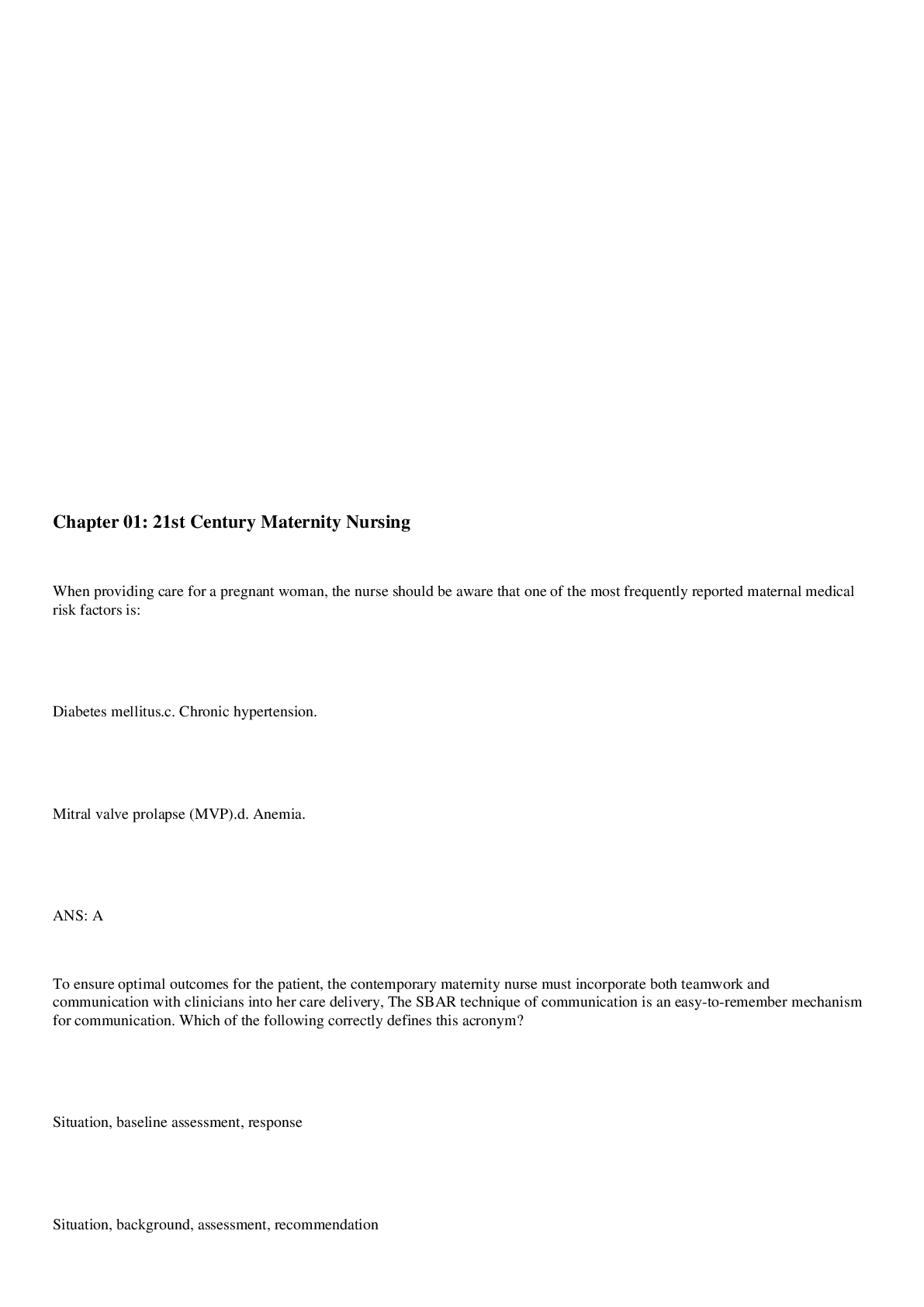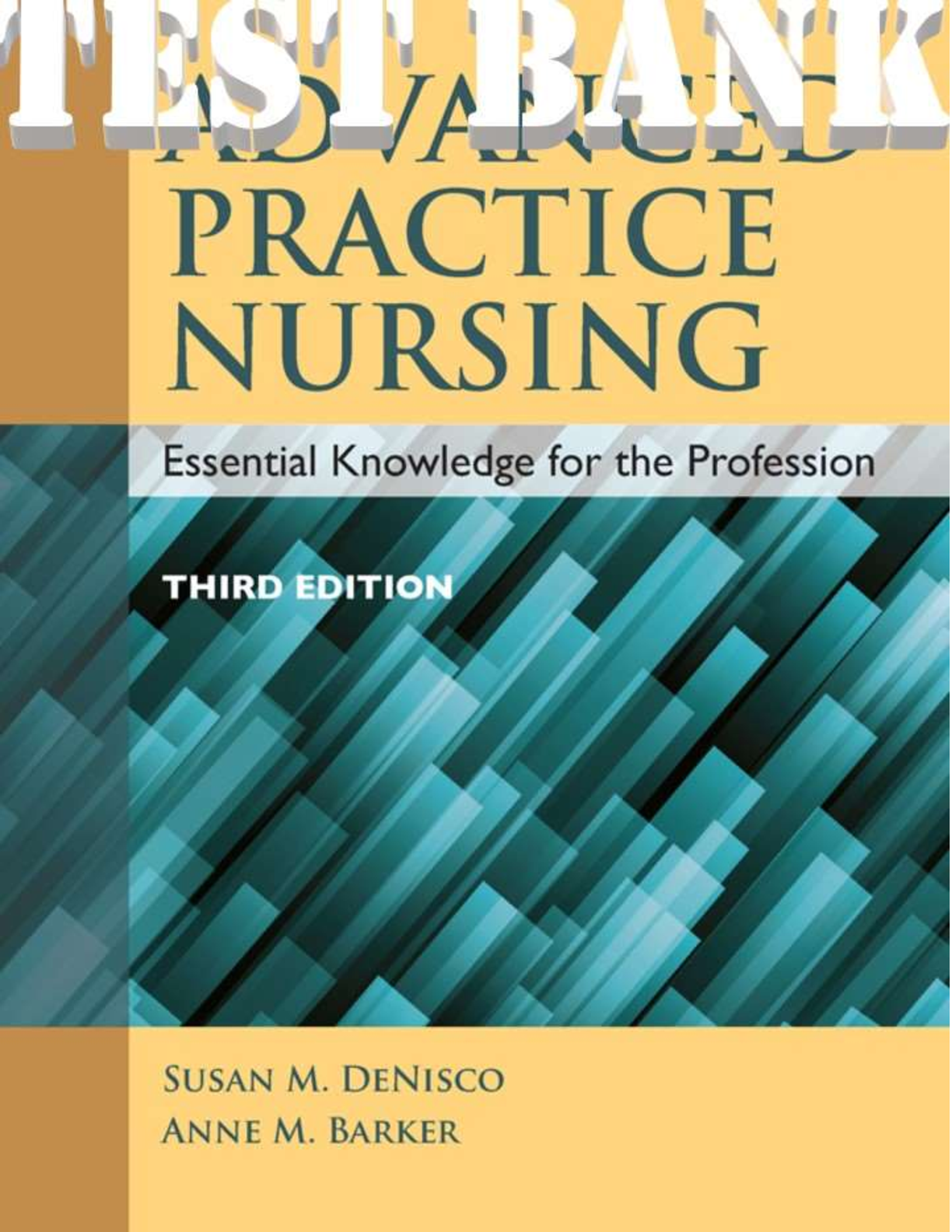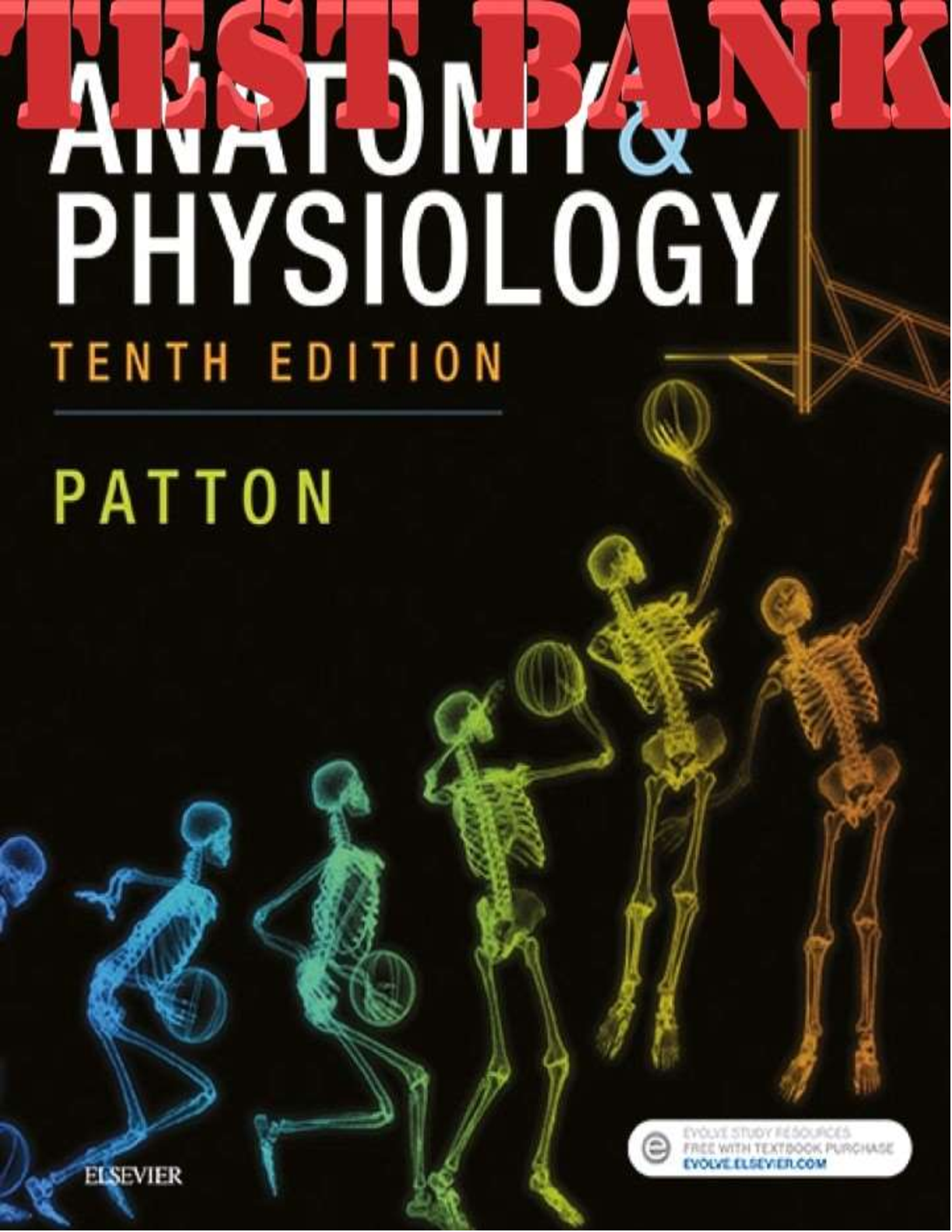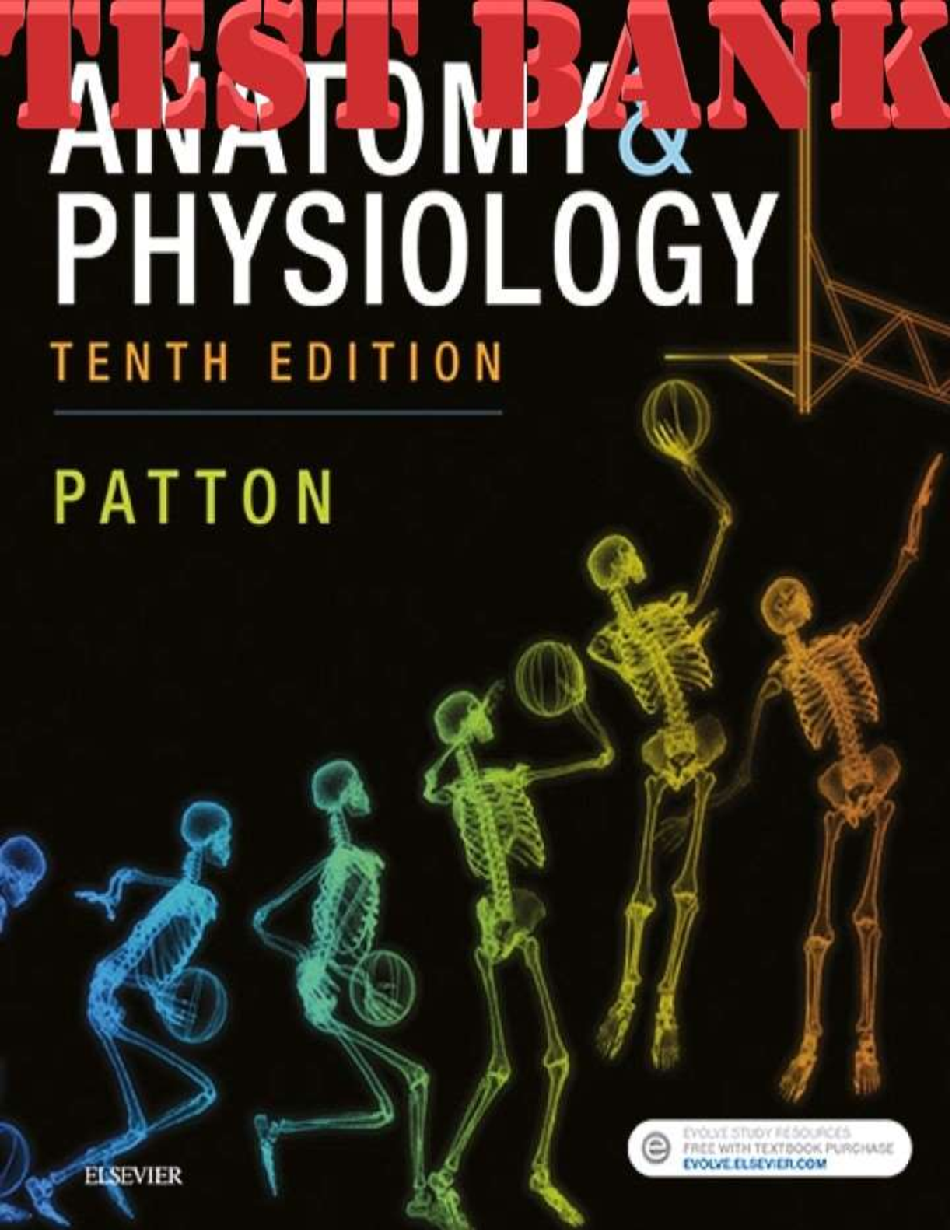*NURSING > TEST BANKS > NSG6440 Dermatological disorders Q-Bank Questions and Rationales (All)
NSG6440 Dermatological disorders Q-Bank Questions and Rationales
Document Content and Description Below
NSG6440 Dermatological Qs, Answers n Rationales Dermatological disorders Q-Bank Questions and Rationales 1. A patient with diabetes has right anterior shin edema, erythema, warmth, and tenderness ... to touch. This developed over the past 3 days. There is no visible pus. What is the most likely diagnosis to consider? Deep vein thrombosis (DVT) Buerger’s disease Cellulitis Correct Venous disease Rationale: This description is one of cellulitis. Cellulitis involves an infection of the subcutaneous layers of the skin. It must be treated with an oral antibiotic. In a patient with diabetes, it is particularly important to identify, and aggressively treat cellulitis early, because elevated blood sugar levels will make eradication more difficult. Buerger’s disease involves inflammation of the medium-sized arteries and does not present on the anterior shin only. DVT seldom presents on the anterior shin, so this is not likely. Venous disease does not present acutely, as in this situation. 2. An example of a first-generation cephalosporin used to treat a skin infection is: cephalexin. Correct cefuroxime. cefdinir. cefaclor. Rationale: Two common first-generation cephalosporins used to treat skin and skin structure infections are cephalexin and cefadroxil. These are taken two to four times daily and are generally well tolerated. These antibiotics provide coverage against Staphylococcus and Streptococcus, common skin pathogens.3. A patient reports that he found a tick on himself about 2 weeks ago. He presents today with a red circle and a white center near where he remembers the tick bite. He did not seek treatment at that time. Today he complains of myalgias and arthralgias. Which laboratory test can be used to help diagnose Lyme disease? CBC Lyme titer ELISA Correct Skin scraping Explanation: A detailed history should always precede testing for Lyme disease. The red circle with the white center is likely erythema migrans (EM). EM is the characteristic skin lesion of Lyme disease (and other illnesses) and usually occurs within 1 month following the tick bite. Many learned authorities, including the Infectious Diseases Society of America, conclude that individuals should not be screened/tested for Lyme disease unless they have a high probability of having Lyme disease. In this case, historical features coupled with physical exam support the diagnosis, and thus screening. The most common initial serologic test for screening is an ELISA. If it is positive, it should be confirmed with a Western blot. Unfortunately, there are a large number of false positives and so a confirmation should be performed. 4. A 16-year-old male has nodulocystic acne. What might have the greatest positive impact in managing his acne? Retin-A plus minocycline Benzoyl peroxide plus erythromycin Isotretinoin (Accutane) Correct Oral antibiotics Rationale: Nodulocystic acne is the most severe form of acne vulgaris. Nodules and cysts characterize this disease. They can be palpated and usually seen on the skin, although they actually are under the skin’s surface. They develop when the follicle wall ruptures and leaks pus and cell contents into the dermis. The contaminated material infects adjoining follicles and the nodule develops. Isotretinoin is the only known effective treatment.5. A skin lesion fluoresces under a Wood’s lamp. What microscopic finding is consistent with this? Clue cells Scabies Hyphae Correct Leukocytes Rationale: A Wood’s lamp emits ultraviolet light when turned on. If an area fluoresces under Wood’s lamp illumination, a fungal (and sometimes bacterial) infection should be suspected. Hyphae are associated with fungal infections. The test is most effectively performed in a darkened room so the fluorescence can be more easily identified. Deodorant, soap, and makeup may also fluoresce. About one-third of hyphae fluoresce. 6. A patient exhibits petechiae on both lower legs but has no other complaints. How should the NP proceed? Refer to hematology Order a CBC Correct Order blood cultures Stop aspirin and reassess in 1 week Rationale: The presence of petechiae on the lower legs (or anywhere on the body) should prompt the NP to consider a problem that is related to a low platelet count. A CBC should be checked to assess the platelet count and for any evidence of anemia from blood loss. If the platelet count is found to be low, referral to hematology should be done. Blood cultures are of no value in this patient, who is otherwise asymptomatic. 7. A 6-year-old patient with sore throat has coryza, hoarseness, and diarrhea. What is the likely etiology? Group A Streptococcus H. parainfluenzae Viral etiology Correct MycoplasmaRationale: This constellation of symptoms is typical of a viral infection. Group A Streptococcus is usually not accompanied by coryza. H. parainfluenzae is not a common cause of pharyngitis. Mycoplasma usually is associated with lower respiratory tract infections. 8. The nurse practitioner examines a patient who has had poison ivy for 3 days. She asks if she can spread it to her family members. The nurse practitioner replies: “Yes, but only before crusting has occurred.” “Yes, the fluid in the blister can transmit it.” “No, transmission does not occur from the blister’s contents.” Correct “No, you are no longer contagious.” Rationale: The skin reaction seen after exposure to poison ivy (or any other skin irritant), takes place because of contact with the offending substance. In the case of poison ivy, the harmful exposure occurs from contact with oil from the plant. The eruptions seen are NOT able to transmit the reaction to other people unless oil from the plant remains on the skin and someone touches the oil. The fluid found in the blisters is NOT able to transmit poison ivy to anyone; only the oil from the plant can do that. After oil has touched the skin, some time must pass for the reaction to occur. Therefore, reaction times vary depending on skin thickness and quantity of oil contacting the skin. 9. A 74-year-old woman is diagnosed with shingles. The NP is deciding how to best manage her care. What should be prescribed? An oral antiviral agent Correct An oral antiviral agent plus an oral steroid An oral antiviral agent plus a topical steroid A topical steroid only Rationale: An oral antiviral agent such as acyclovir, famciclovir or valacyclovir should be prescribed, especially if it can be initiated within 72 hours after the onset of symptoms. The addition of oral corticosteroids to oral antiviral therapy demonstrates only modest benefit. Adverse events to therapy are more commonly reported in patients receiving oral corticosteroids. There is no evidence that corticosteroid therapy decreases the incidence or duration of postherpetic neuralgia or improved quality of life. Corticosteroids should be limited to use in patients with acute neuritis who have not derived benefit from opioid analgesics.10. When can a child with chickenpox return to daycare? 24 hours after he is fever-free 48 hours after he is fever-free After all lesions have crusted Correct When he no longer itches Rationale: Chickenpox is highly contagious and can be spread via respiratory secretions from an infected person or by direct contact from the vesicle fluid from lesions on the skin or mucus membranes. The usual incubation period is about 2 weeks but can be as long as 21 days or as short as 10 days. The greatest period of infectivity is 48 hours prior to the onset of the rash and until all the skin lesions have crusted over. 11. Which vehicle is least appropriate in a patient who has atopic dermatitis? Lotions Correct Creams Thick creams Ointments Rationale: Patients who have atopic dermatitis need continuous skin hydration. Lotions can worsen xerosis (dry skin) due to evaporation of water on the skin. In contrast to creams and ointments, lotions have a high water content and a low oil content. Creams have a lower water content. Ointments have no water and are excellent agents to use on dry skin as well as to prevent dry skin. 12. A patient has 10 cm of well demarcated erythema on his lower leg that is raised and warm to touch. He had an abrupt onset of lower leg pain, and fever that began 36 hours ago. What is this? Cellulitis Incorrect Erysipelas Correct Impetigo An allergic reaction Rationale: Erysipelas is characterized by an acute onset of symptoms as described in this scenario. Fever and chills are common. Patients with cellulitis tend to have a more gradual course, with development of symptoms over several days.13. The American Cancer Society uses an ABCDE mnemonic to help patients develop awareness of suspicious skin lesions. What does the “B” represent? Bleeding Black Border Correct Benign Rationale: The mnemonic is helpful when looking at skin lesions, but it is primarily used for patient education. The “A” represents asymmetry (asymmetrical lesions are worrisome), “B” is border (irregular borders), “C” is color (colored lesions have more melanin and may be associated with malignant melanoma), “D” is diameter (larger than a pencil eraser [6 mm] is concerning), and “E” represents enlarging or elevated (lesions that are actively enlarging are growing; elevated lesions are concerning). 14. The term caput succedaneum refers to: cradle cap. atopic dermatitis. scalp edema. Correct asymmetric head shape. Rationale: Caput succedaneum is a common finding in newborns. It is a result of pressure over the presenting part. This results in some ecchymosis of the scalp. While this may be disturbing to new parents who observe this in their newborn, it will resolve in a few days and is harmless. 15. Patients with atopic dermatitis are likely to exhibit: itching. Correct asthma and allergic bronchitis. nasal polyps and asthma. allergic conjunctivitis and wheezing. Rationale: Atopic dermatitis is diagnosed on clinical presentation and includes evidence of pruritic skin. It is recurrent and often begins in childhood. For decades the "atopic triad" has been used to refer to patients with atopic dermatitis, asthma, and allergic rhinitis. This has recently been called into question. A similar triad, known as Samter’s triad, consists of asthma, aspirin sensitivity, and nasal polyps. Samter’s triad is not the same as the atopic triad.16. A 9-year-old has been diagnosed with chickenpox. A drug that should be avoided in him is: penicillin. aspirin. Correct ibuprofen. sulfa. Rationale: Aspirin should always avoided in the case of viral infections in children and adolescents. The incidence of Reye syndrome is increased if aspirin is given. This is especially true with varicella and influenza infections. The typical constellation of symptoms occurs during a bout of chickenpox and includes nausea, vomiting, headache, excitability, delirium, and combativeness with progression to coma. Since aspirin use has declined sharply, Reye syndrome has too. 17. A skin lesion that is a solid mass is described as a: macule. Incorrect papule. Correct vesicle. bullae. Explanation: A papule is an elevated solid mass up to 1.0 cm. in diameter. A macule is flat and small, like a freckle. A vesicle is filled with a serous fluid and less than 1.0 cm in diameter. A bullae is fluid filled and larger than 1.0 cm in diameter. 18. A 16-year-old has been diagnosed with Lyme disease. Which drug should be used to treat him? Doxycycline Correct Amoxicillin-clavulanate Trimethoprim-sulfamethoxazole Cephalexin Rationale: Doxycycline is frequently chosen first line to treat Lyme disease. However, numerous studies have demonstrated that amoxicillin and cefuroxime have equal efficacy as doxycycline in treatment of early Lyme disease. Doxycycline is not recommended in children younger than 9 years of age.19. A 4-year-old has been diagnosed with measles. The nurse practitioner identifies Koplik’s spots. These are: spots on the skin that are pathognomonic for measles. red rings found on the tongue that have a white granular area inside the ring. found on the inside of the cheek and are granular. Correct blanchable areas on the trunk and extremities. Rationale: Koplik’s spots are found in the oral cavity, especially on the buccal mucosa opposite the first and second molars. The spots are white and granular and are circled by an erythematous ring. The spots are pathognomonic for measles. The exanthem associated with measles is typically described as cranial to caudal in progression. The lesions become confluent and last for approximately 4 days before fading begins. 20. The main difference between cellulitis and erysipelas is the: age of the patient. length of time that infection lasts. treatment. layer of skin involvement. Correct Rationale: Erysipelas and cellulitis both cause skin erythema, edema, and warmth. However, erysipelas involves the upper dermis and superficial lymphatics; cellulitis involves the deeper dermis and subcutaneous fat. Erysipelas is usually caused by Streptococcus; cellulitis may be caused by Staphylococcus and less commonly by Streptococcus. [Show More]
Last updated: 2 years ago
Preview 1 out of 8 pages

Buy this document to get the full access instantly
Instant Download Access after purchase
Buy NowInstant download
We Accept:

Reviews( 0 )
$6.50
Can't find what you want? Try our AI powered Search
Document information
Connected school, study & course
About the document
Uploaded On
Mar 16, 2021
Number of pages
8
Written in
Additional information
This document has been written for:
Uploaded
Mar 16, 2021
Downloads
0
Views
83


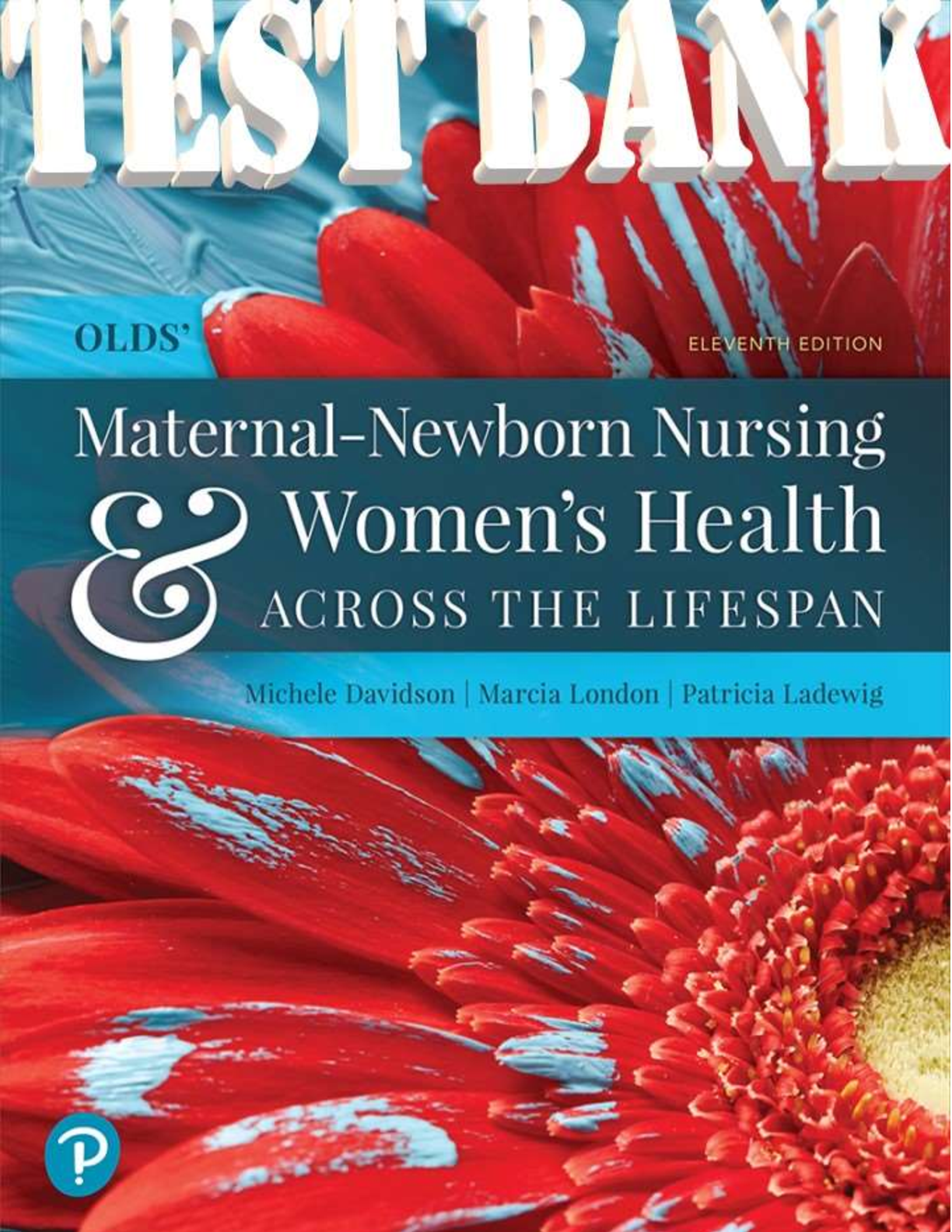
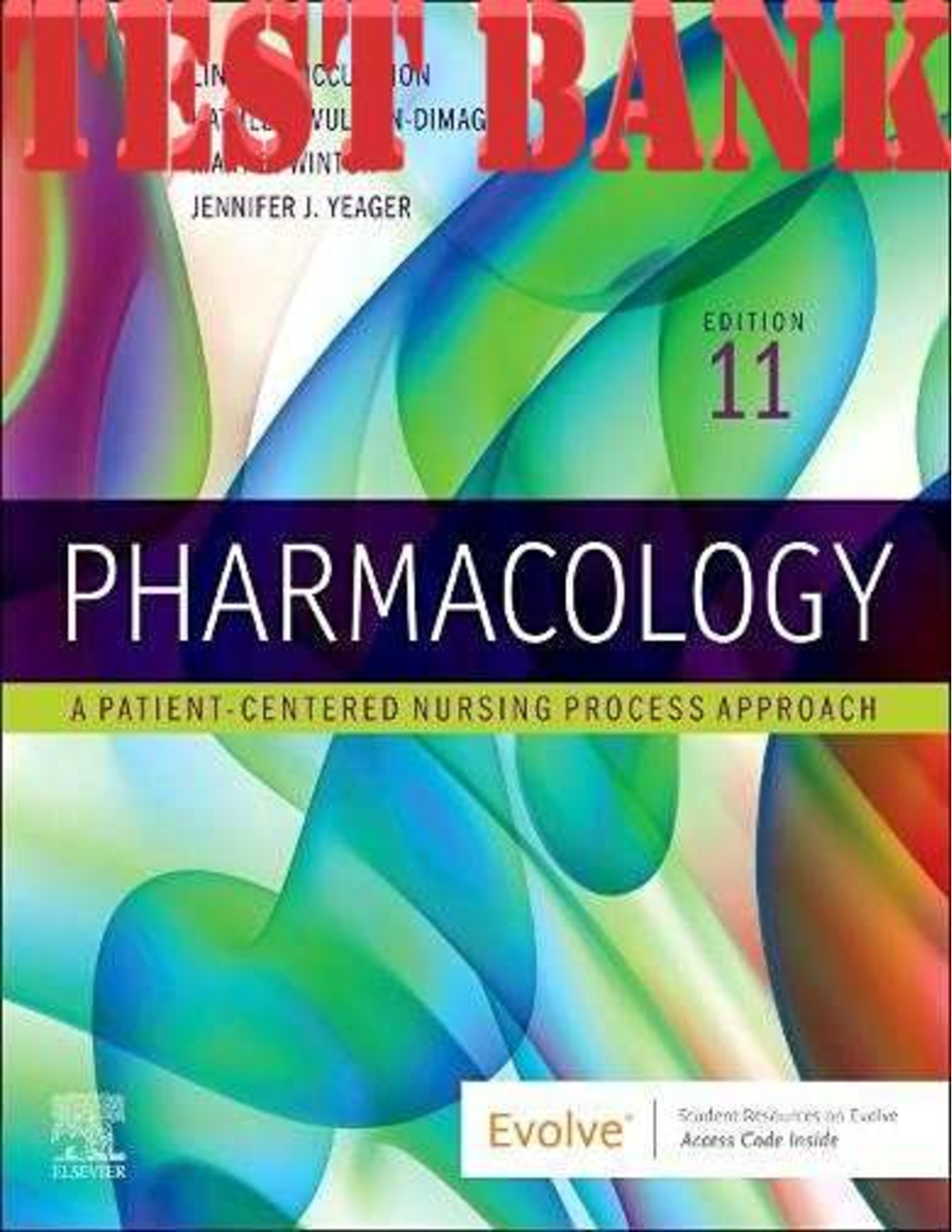

 (Diane Pacitti etc.png)


